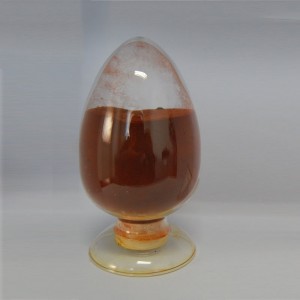The end use of dodecanol can be classified into four broad categories, namely, personal care, household detergents, industrial & hard surface cleaning and other uses. Under personal care, dodecanol can be used in its pure form or as alcohol ethoxylate or as esters or as quaternary ammonium salts. The end uses for these forms of dodecanol are creams, lotions, skin products, bath oils, lipsticks, medicated cosmetics and sunscreen agents. For use in these products, dodecanol acts as a thickener, carrier, opacifier, anti static and sheen agent. For use in household and industrial detergents, dodecanol acts as a dispersant, foam controller, wetting agent, foam stabilizer and germicidal carrier. It finds application in laundry products, wool washing, scouring cleaner and fabric softener. For use in other industries like textiles, leather, plastics, pharmaceuticals and paper, dodecanol imparts properties such as that of a leveling agent, bacteriostat, water evaporation retardant, coupling agent, plasticizer and anti corrosion agent. In addition to this, lauryl alcohol ethoxylate which is a derivative of dodecanol can be used for silicon and wax emulsification, in colorants manufacturing and electroplating industry. Out of all these applications, dodecanol has widespread application in the surfactants market. Besides imparting fragrance, dodecanol also acts as a carrier, thickener and foam controller. These properties make it an excellent and irreplaceable ingredient for surfactants.
First, there is the actual production rate in the Permian. Consider for a moment that the Permian Basin has been producing oil since the 1920s, and reached the two million BPD mark in the 1970s. Production slowly declined, until dipping back under one million BPD around the turn of the 21st century.
Carboxymethyl Cellulose Market is expected to exceed USD 1.7 billion by 2024; according to a new research report by Global Market Insights, Inc. Carboxymethyl cellulose (cellulose gum) industry growth will be driven by the escalating demand trends from the food & beverage segment. The product will have robust demand in the processed food formulations for various roles as: adhesion agent, thickening agent and stabilizer, emulsifier, bulking agent, firming agent, gelling & glazing agent, humectant, etc. WHO estimated that 39% of people aged 18 and above were overweight in 2016 and 13% were obese. In the same year, about 41 million children under the age of 5 were identified to be overweight or obese. Rising desire for food products with natural ingredients along with the increasing obesity levels have been boosting fat replacers demand in the recent years, which in turn propel CMC market size by 2024.
The global oilfield process chemicals market will exhibit a remarkable growth during the forecast period. The oil and gas industry, which is the only end-user for oilfield process chemicals, has a high demand for these chemicals because of their various applications in making upstream operations in the oil and gas industry highly productive and efficient.

The global market for CMC is a fragmented, competitive landscape comprising some of world's leading chemical companies and several domestic companies, all of which are vying for market share. Chemicals and materials giants such as Ashland Inc., AkzoNobel N.V., The Dow Chemical Company, J.M. Huber Corp. (CP Kelco) and Daicel Corp. have invested billions of dollars in focused research and development, and capacity expansion. Owing to CMC’s multi-functional characteristics, the market has seen a vast influx of investment from both CMC producers and end product manufacturing companies in recent years.
Aubin has been supplying high-quality cement additives to clients in the oil and gas industry for more than 25 years, and has an experienced team of chemists who can formulate the appropriate cement slurry for specific applications.
With a watchful eye on Pennsylvania’s turmoil, many New York farmers have started to test their water pre-emptively, in the event that Governor Andrew Cuomo lifts the state’s current moratorium on fracking. And in the commercial kitchens of a city obsessed with the provenance of its prosciutto, chefs like Heather Carlucci-Rodriguez, a founder of Chefs for the Marcellus and the executive pastry chef at Manhattan’s Print Restaurant, are keeping careful tabs on their regional suppliers.
The 9-decanoic acid methyl ester Market report moreover, gives a review of key players associated with market main thrust, development for 9-decanoic acid methyl ester Market and highlights point and application of the trade. The report furthermore includes the market by sort, by application, and by makers, with traffic, earnings and 9-decanoic acid methyl ester market share.

Global Carboxymethyl Cellulose (CMC) Market reports provide a valuable source of insightful data for business strategists and competitive analysis of Carboxymethyl Cellulose (CMC) Market. It provides the Carboxymethyl Cellulose (CMC) industry overview with growth analysis and futuristic cost, revenue, demand and supply data. The research analysts provide an elaborate description of the value chain and its distributor analysis. This Carboxymethyl Cellulose (CMC) Market study provides comprehensive data which enhances the understanding, scope and application of this report.
Fracking a single well requires up to 7 million gallons of water, plus an additional 400,000 gallons of additives, including lubricants, biocides, scale and rust inhibitors, solvents, foaming and defoaming agents, emulsifiers and de-emulsifiers, stabilizers and breakers. About 70 percent of the liquid that goes down a borehole eventually comes up—now further tainted with such deep-earth compounds as sodium, chloride, bromide, arsenic, barium, uranium, radium and radon. (These substances occur naturally, but many of them can cause illness if ingested or inhaled over time.) This super-salty “produced” water, or brine, can be stored on-site for reuse. Depending on state regulations, it can also be held in plastic-lined pits until it evaporates, is injected back into the earth, or gets hauled to municipal wastewater treatment plants, which aren’t designed to neutralize or sequester fracking chemicals (in other words, they’re discharged with effluent into nearby streams).
Key performing geographical regions (APAC, EMEA, Americas) along with their major countries are detailed in this report.
In Louisiana, seventeen cows died after an hour’s exposure to spilled fracking fluid. (Most likely cause of death: respiratory failure.) In north central Pennsylvania, 140 cattle were exposed to fracking wastewater when an impoundment was breached. Approximately seventy cows died; the remainder produced eleven calves, of which only three survived. In western Pennsylvania, an overflowing waste pit sent fracking chemicals into a pond and a pasture where pregnant cows grazed: half their calves were born dead. The following year’s animal births were sexually skewed, with ten females and two males, instead of the usual 50-50 or 60-40 split.
Global 9-decanoic acid methyl esterMarket 2018 Key Players, Share, Industry Key Drivers | Defoamer For Oil Well Cementing Related Video:
With dependable high-quality method, fantastic standing and ideal purchaser assistance, the series of products produced by our firm are exported to many countries and regions for Well Cementing , Drilling Fluid Chemical Additive Kalium , Lightweight Agents , We are adhering to the philosophy of "attracting customers with the best products and excellent service". We welcome customers, business associations and friends from all parts of the world to contact us and seek cooperation for mutual benefits.




